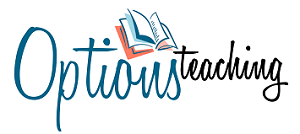
Education, in its essence, is a journey of exploration and growth. As we delve into the realms of knowledge and skill, it becomes evident that one size does not fit all. Diverse learning styles call for a variety of teaching methods and, more importantly, the right educational tools to facilitate this journey. In this article, we explore the myriad of tools available that cater to different learning preferences, ensuring an inclusive and effective educational experience.
· Understanding Learning Styles
Before we dive into the tools, it’s essential to understand the various learning styles. Broadly, they are classified as visual, auditory, reading/writing, and kinesthetic. Each style has its unique requirements, and recognising these is the first step in selecting the appropriate tools.
· Visual Learners
Visual learners thrive on images, diagrams, and spatial understanding. Tools that incorporate visual aids such as interactive whiteboards, graphic organisers, and educational videos can significantly enhance their learning process.
· Interactive Whiteboards
These boards are a revolutionary tool in classrooms, allowing teachers to present information in a visually engaging manner. They support various multimedia formats and can make learning interactive and fun for visual learners.
· Educational Videos
Platforms like YouTube and educational websites offer a plethora of videos on various subjects. These videos, often coupled with animations and illustrations, make complex topics more digestible for visual learners.
· Auditory Learners
Auditory learners excel when the information is presented through sound and music. Audiobooks, podcasts, and discussion forums are their allies in the learning process.
· Audiobooks and Podcasts
An extensive range of audiobooks and educational podcasts are available, covering various subjects. These resources are perfect for auditory learners who can absorb information effectively through listening.
· Reading/Writing Learners
This group prefers learning through reading texts and writing notes. E-books, online articles, and educational blogs are their go-to resources.
· E-books and Online Libraries
Online libraries and platforms provide access to a vast array of e-books and academic papers. These resources cater to learners who find comfort in the written word.
· Kinesthetic Learners
Kinesthetic learners need to engage in physical activity to learn effectively. Interactive simulations, educational games, and hands-on experiments are ideal for them.
· Interactive Simulations
Tools like virtual labs and interactive models help kinesthetic learners grasp concepts by ‘doing’ rather than just observing.
· Educational Games
Games that incorporate learning objectives can be highly effective for kinesthetic learners. These games make learning a dynamic and engaging activity.
Conclusion
In conclusion, the landscape of educational tools is vast and varied. Catering to different learning styles is not just about inclusivity; it’s about harnessing the full potential of each learner. By incorporating these tools into educational practices, we can create a more dynamic, engaging, and effective learning environment. The future of education is here, and it’s tailored to fit all.
